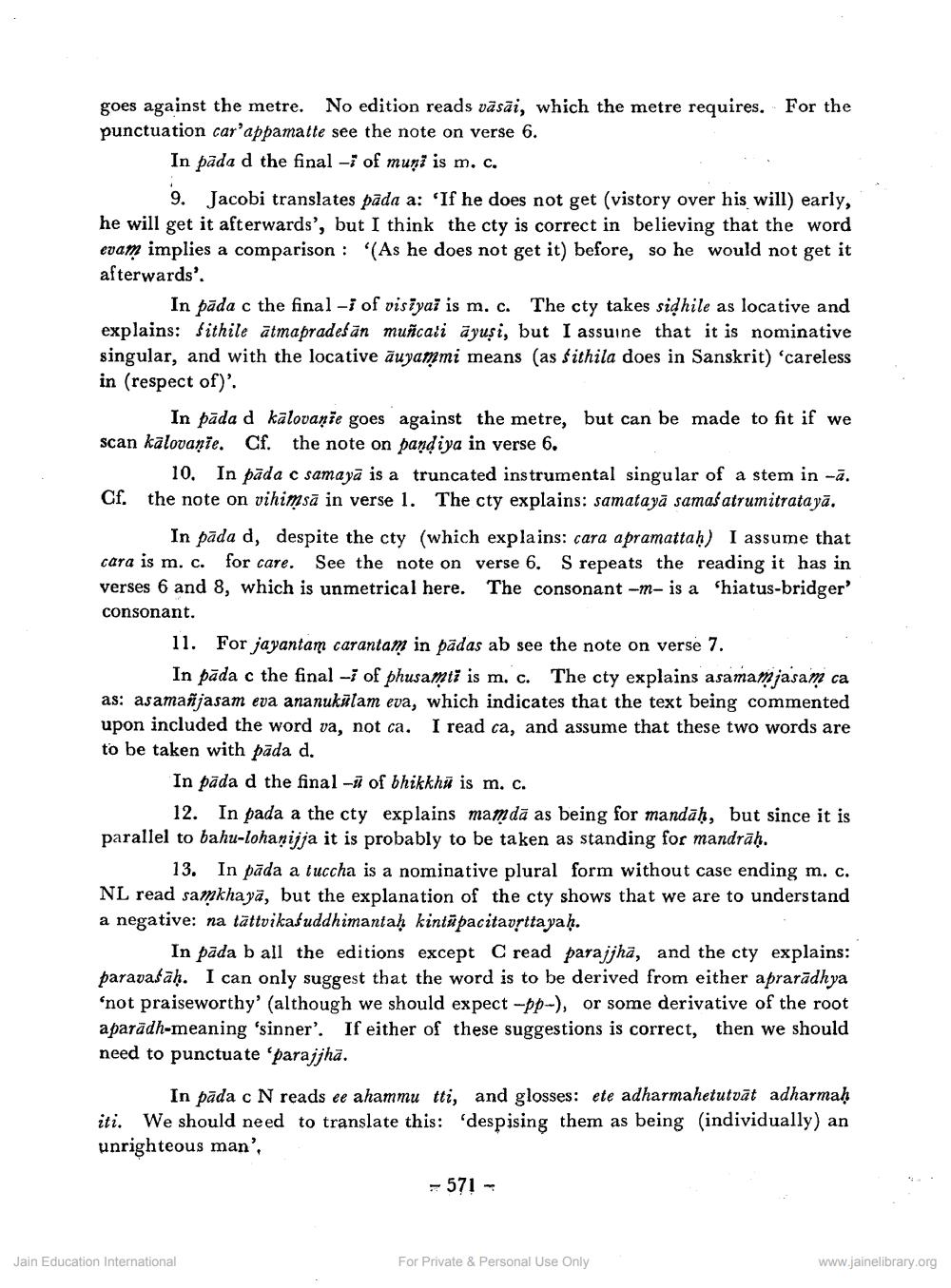________________
goes against the metre. No edition reads vāsāi, which the metre requires. For the punctuation car'appamatte see the note on verse 6.
In pāda d the final -i of muni is m. c.
9. Jacobi translates pada a: 'If he does not get (vistory over his will) early, he will get it afterwards', but I think the cty is correct in believing that the word evam implies a comparison : '(As he does not get it) before, so he would not get it afterwards.
In pāda c the final -i of visiyai is m. c. The cty takes sidhile as locative and explains: Sithile atmapradeśān muñcati ayusi, but I assuine that it is nominative singular, and with the locative auyammi means (as Sithila does in Sanskrit) 'careless in (respect of).
In pada d kalovanie goes against the metre, but can be made to fit if we scan kalovanie. Cf. the note on pandiya in verse 6.
10. In pāda c samayā is a truncated instrumental singular of a stem in -ā. Cf. the note on vihimsa in verse 1. The cty explains: samatayā samašatrumitratayā.
In pāda d, despite the cty (which explains: cara a pramattah) I assume that cara is m. c. for care. See the note on verse 6. S repeats the reading it has in verses 6 and 8, which is unmetrical here. The consonant-m-is a 'hiatus-bridger' consonant.
11. For jayantam carantam in padas ab see the note on verse 7.
In pāda c the final -1 of phusamti is m. c. The cty explains asamamjasam ca as: asamañjasam eva ananukulam eva, which indicates that the text being commented upon included the word va, not ca. I read ca, and assume that these two words are to be taken with pada d.
In pada d the final -ū of bhikkhū is m. c.
12. In pada a the cty explains mamdā as being for mandāḥ, but since it is parallel to bahu-lohanijja it is probably to be taken as standing for mandrāh.
13. In pāda a tuccha is a nominative plural form without case ending m. c. NL read samkhaya, but the explanation of the cty shows that we are to understand a negative: na tättvika-uddhimantaḥ kintäpacitavrttayaḥ.
In pada b all the editions except C read parajjha, and the cty explains: paravasāḥ. I can only suggest that the word is to be derived from either aprarādhya 'not praiseworthy' (although we should expect -pp-), or some derivative of the root aparādh-meaning 'sinner'. If either of these suggestions is correct, then we should need to punctuate 'parajjha.
In pada c N reads ee ahammu tti, and glosses: ete adharmahetutvāt adharmaḥ iti. We should need to translate this: "despising them as being individually) an unrighteous man',
- 571 -
Jain Education International
For Private & Personal Use Only
www.jainelibrary.org




